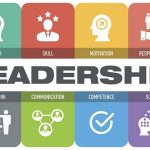What ‘kind’ of HR do you have in your organisation? Relief and development organisations have a huge range of sizes and structures.
Some organisations have dedicated Human Resource functions with specialist teams and resources; some organisations have very small teams or even individuals who must act across all the Human Resources roles described below.
For a line manager to work effectively in partnership with Human Resources – and vice versa – it is important for the manager to know the focus of the Human Resources function in their organisation.
For example – is it mainly concerned with achieving ‘Effective Basics’ as in the model below; is the function also acting as a ‘Change Leader’?

Line Managers and HR working together “The most carefully thought-through HR strategy is a waste of time unless it is embraced by line managers who have the skills and understanding necessary to engage and motivate employees”
The people-management cycle
The people management cycle shown below describes the whole range of activities that need to be taken in order to plan for and recruit employees; deploy them in their specific roles; manage them, address their development and learning, and manage their transition – whether that means moving to a new role, or promotion, or departure from the organisation. This cycle also represents the steps in an employee’s relationship with the organisation. The line manager is responsible for the people management of employees – that is, for the employees who report to the manager..
The other main stakeholder is the organisation’s Human Resources function, which would play different roles in the different stages of this cycle. That specific HR role is influenced by the organisation’s HR policies and practices, by compliance with local law, and by local and organisational custom. What the HR role looks like in practice is influenced by the scale and scope of the organisation itself: is there an ‘HR team’ of specialists? Is it a small team that needs to multi-task? Is it a remote team?
Other stakeholders influence the activities at different steps of the cycle – for example IT may determine and monitor IT security policies. The activities and specific elements in this cycle will be specific to your organisation. As a line manager, you need to have a shared understanding with Human Resources (and other stakeholders) about who is responsible for carrying out which activities in this people management cycle.

Role clarity between the Human Resources function and line managers
It is important to recognise the clarity of roles involved in developing and supporting some of the processes that are an integral part of people management – in particular the processes and policies that are developed and supported by the Human Resource function, and correspondingly the activities that are the responsibility of line managers. For example: the ‘Performance Management System’ would probably be developed for the whole organisation by Human Resources, who might therefore provide formats, deadlines, training, and support record keeping – depending on the size and nature of the organisation. The line manager would be responsible for managing the performance of his or her direct reports – that is not the role of Human Resources.
With the wide range of organisation sizes and structures in the relief and development sector, it is not possible to be prescriptive about precisely who is responsible for different activities in the people management cycle. Line managers should feel confident to ‘ask the right questions’ of Human Resources in order to establish who is responsible for what. To help frame the questions about responsibility or accountability, the ‘RACI’ model below is a useful and practical tool to identify which stakeholders play what roles.



